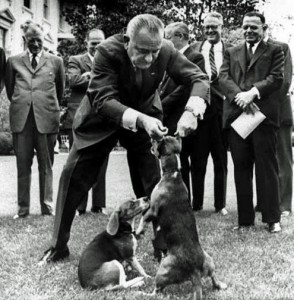I’m getting ready to go to Japan and China to run some classes, and since I haven’t been there in a couple of years, I’ve gone back to some trusty resources to help me ensure that I can speak the language of my listeners. No, I’m not referring to actually learning Japanese and Chinese, but I do want to make sure that I am sensitive to the thinking and communication styles of my hosts and students.
As the world becomes increasingly global, it becomes more and more important for communicators to be aware that there is no one best way of thinking and communicating, and unless you get at least a passing familiarity with other cultures, you are at best leaving effectiveness on the table and at worst at risk of committing a serious faux pas.[1]
When I first went to China about fifteen years ago, I had the good fortune to read a book called Kiss, Bow, or Shake Hands . It was good fortune because it provided practical advice that definitely helped me. I was at a dinner with all my hosts, when one of them said, “Mr. Malcolm, I would like to drink a toast to you,” with a shot glass of mao tai. Fortunately, the book had prepped me for this, and I replied, “I would be honored if everyone would join in.” If I had not done that, each one in turn would have proposed a toast, and I would have ended up with about 12 shots, while of my hosts only had one. As it was, they stopped toasting after about the third shot. Who says you can’t learn anything practical from books? This one covers 60 different countries, so it’s a useful resource if you travel a lot.
While that book is still an excellent resource for customs and behaviors, another resource I’ve found to be very useful is Professor Geert Hofstede’s cultural dimensions website. Based on research he did for IBM during the 1970s, Hofstede isolated five cultural characteristics and measured the degree to which they apply to various countries (the definitions are my own, and are vastly simplified).
- Power distance: the amount of respect and acceptance that lower ranking people give to those of higher rank.
- Individualism: the amount of emphasis on group harmony vs. individual needs.
- Masculinity: emphasis on competition and achievement, vs. the feminine values of modesty and caring.
- Uncertainty avoidance: the amount of tolerance for ambiguity and unstructured situations.
- Long-term orientation: this dimension was added later, and describes the extent to which the members are willing to defer rewards.
It’s tough to go into too much detail in a short article, but I have found it helpful to, first, check out the US measurement for each characteristic, and then compare it to that of the country to which I am traveling. From Hofstede’s web site, here are the measurements for the three:
| USA | JAPAN | CHINA | |
| PDI |
40 |
54 |
80 |
| IND |
91 |
46 |
20 |
| MAS |
62 |
95 |
66 |
| UAI |
46 |
92 |
30 |
| LTO |
29 |
80 |
118 |
The web site also has a written explanation for each country that you might find helpful.
Understanding others often begins with understanding yourself, so a third resource that I’ve used and liked is Americans at Work: A Cultural Guide to the Can-Do People, by Craig Storti. It’s written to help those from other cultures understand us, and it makes for fascinating and sometimes uncomfortable reading. For example, did you know that many cultures consider that American managers don’t have good people skills? They consider us too direct, impatient and driven to truly understand the nuances of relationships and conversations. Our tendency to take things too literally leads to misunderstandings, as in this example:
BILL: We need to schedule the next team meeting.
HIROKO: Good idea.
BILL: How about next Tuesday morning?
HIROKO: Tuesday?
BILL: Yes, would 10:30 be OK?
HIROKO: 10:30? Is it good for you?
BILL: Yes, it’s fine.
HIROKO: I see.
After this exchange, Bill confidently enters the meeting date into the calendar, but Hiroko thinks he has made it quite clear that the meeting time is not good for him. He never directly answered Bill’s question, and never said yes.
Although these resources make for fascinating and useful reading, it’s important to keep in mind that they all address averages, not individuals. You can always find impatient Chinese, subservient Americans, and spontaneous Japanese, so don’t try to force-fit everyone you meet into a number.
Secondly, I haven’t seen research along these lines, but in my own travels I’ve noticed that frequently corporate culture exercises greater influence on how people think and communicate than national culture. I saw a dramatic demonstration of this in Japan two years ago, when I worked with two different companies in the same week. In the first, my audience consisted of salespeople, and they fit the Japanese image very closely. Later that week, I trained some engineers who were as open and challenging in the classroom as any American group I’ve worked with, shattering two stereotypes in the process.
The father of all persuasive communication, Aristotle, taught that persuasion results from a combination of logos, pathos and ethos, and that ethos is the most important persuasive device.
While I believe this is not necessarily true in all persuasion situations, it is definitely true that who you are perceived to be by your audience is a huge factor in the success of your persuasive efforts. Their readiness to listen and to act on what they hear is powerfully affected by their perception of you as the messenger, and that perception is situational: it depends on your fit with that particular audience’s expectations for your particular topic.
Ethos often works not only by credibility but also by inspiration. If the audience looks up to the speaker, they want to be like him or her; they want to gain by association and agreement with his views.
Ethos gains special importance from the fact that it begins to work on the audience before you open your mouth. How you appear, what they know about your reputation and credentials, even the way you approach them, all send loud signals that affect how they will respond to your words.
In sales and marketing, we see that ethos can even affect how objects are perceived. A well-established brand influences how potential buyers perceive a product. Commodities can be turned into sought-after treasures simply by carrying a certain brand. Even price can be a form of ethos. An expensive bottle of wine has a different ethos than a cheap one. It works in reverse as well—many people refused to buy BP gasoline after the Gulf oil spill in 2010.
Although it seems like a simple concept, ethos is a product of many elements, including your appearance, credentials, motives and actions.
Appearance: It helps to be attractive, and it helps to fit the audience’s expectations. It’s unfair but true that attractive people are also seen as smarter and more likeable, which definitely helps their persuasiveness. Appearance can also be affected by what you wear. Robert Cialdini showed in experiments that people wearing suits were given more respect and achieved greater compliance with requests, for example.
But appearance is not all-powerful, as was demonstrated last week by Bobak Ferdowski. Who would have picked this guy for a NASA flight director?
Credentials and reputation: Ferdowski’s credentials as a NASA flight director far outweigh the audience’s expectation of what a flight director should look like. Credentials are a form of brand. A Harvard professor speaking about a topic in her area of expertise will automatically be accorded greater credibility than someone with less impressive academic credentials.
While credentials are about qualifications, reputation is about your qualities: who you are, what have you done,and how you have done it. I recently taught a class to a group of engineers, all of whom had advanced degrees from top schools. They told me that, within their company, they pay very little attention to where someone went to school, but a lot of attention to which projects they’ve been involved in; the more prestigious the project, the more prestigious the engineer.
The irony of credentials and reputation is that if you spend too much time emphasizing them, you may come across as either defensive or boastful. You’ll be better off if you can get your introducer to say something about you.
Motives: Any time you’re trying to “sell” ideas, your listeners will be more receptive if they feel you share their values, and will be sensitive to your motives. Although they know you will benefit somehow if they acquiesce, try to make your message as listener and customer-focused as possible by couching it in their language and in accordance with what they value. But don’t carry this too far: when the benefit is entirely on your side, be up front about it. Sometimes a heartfelt, “I need your help” goes further than a listing of advantages and benefits.
Action: During spoken communication, ranging from face-to-face to large keynote speeches, the speaker’s actions, such as their tone of voice, facial expressions, stance and gestures all contribute to the ethos component of persuasion. The main keys here are to be authentic and confident.
In my own work as a presentations trainer, ethos is especially dependent on actions. If I tell my students that they must carry themselves or express themselves in a certain way, you can bet that they will immediately notice when I don’t follow my own rules. Do as I say, not as I do, does not work for presentations trainers.
What applies to presentations trainers actually applies to anyone: who you are and what you do often speaks much louder than what you say. Don’t just say it—be it.
One of the joys of studying persuasion is seeing the infinite ingenuity that humans can deploy to figure out ways to separate people from their money, ranging from subtle (and legal) to downright criminal.
The June 30 issue of The Economist contained three articles along these lines.
Even Nigerian scammers qualify their leads
We laugh at the obvious scams that pop up all the time in our email, especially the ones from Nigeria that offer us an opportunity to earn easy millions by giving our bank account details. They are written in such poor English that you wonder how anyone could ever fall for them. One would think that, over time, these scammers would get better and make their attempts less transparent. According to a Microsoft research paper summarized in the magazine, however, the scammers deliberately make their scams obvious.
I just finished reading The Passage of Power, the fourth volume of Robert Caro’s biography of Lyndon B. Johnson. I have to confess I’ve never been a huge fan of LBJ’s—probably because I spent a lot of time in the principal’s office in elementary school and his portrait gazed down at me as I waited to be called in to see the principal.
As a biography, it’s a good read. However, as a master’s level tutorial on persuasion, power, and influence, it is a masterpiece.
LBJ rose from very poor and humble roots to the highest office in the land through the application of practical—some would say ruthless—persuasion in all its forms, from face to face selling to nationwide speeches.
Phenomenal salesman
Many of his contemporaries said he was the greatest one-on-one salesman they had ever seen. He could talk to strong-minded people who were determined not to do what LBJ wanted, and emerge getting his own way.






